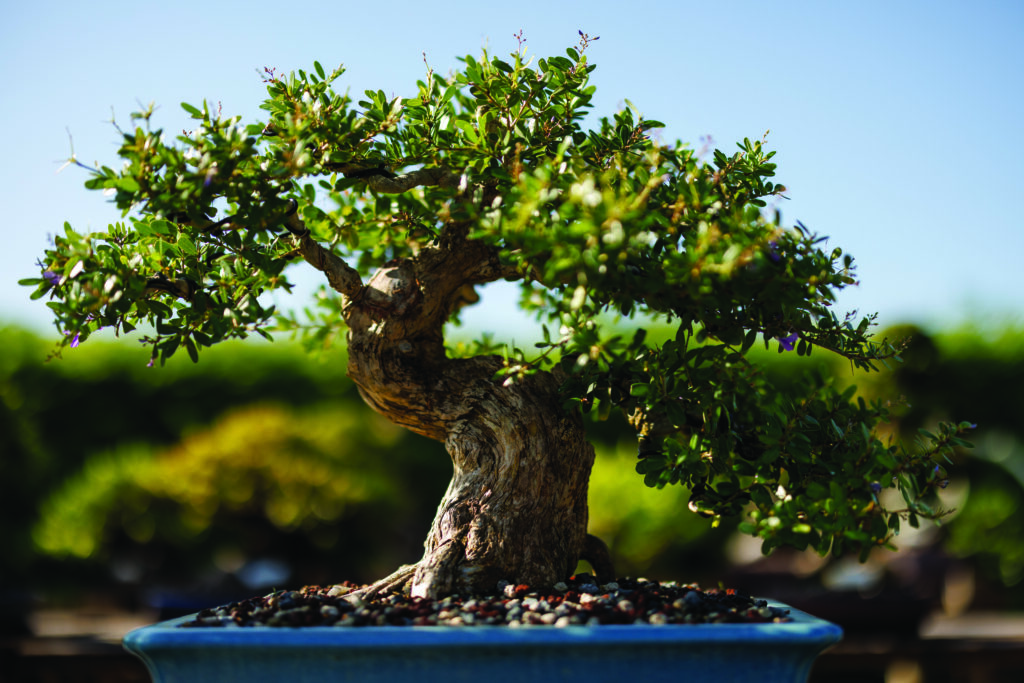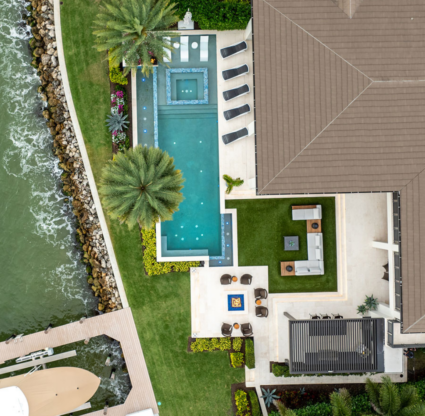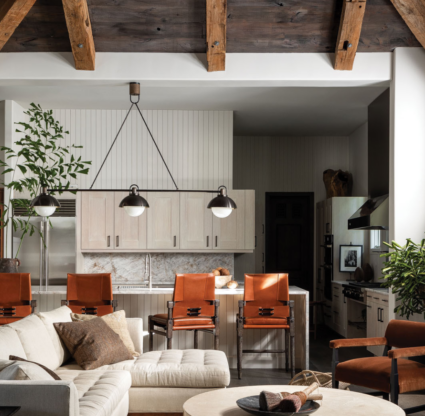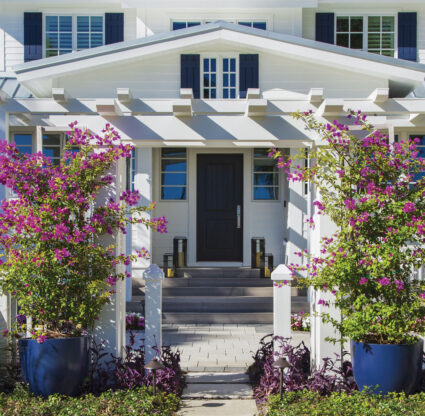In a TikTok clip, Erik Wigert’s tatted hands carefully twirl black wires around delicate branches, bending and molding the tree to his desired form as his apprentice-turned-assistant, Ashley Martin, uses a carving tool to remove bark, exposing the tree’s white trunk flesh. “You start with something that might look really ugly, and you turn it into something completely beautiful,” Ashley says.
Erik, who has displayed at competitions throughout Florida, Mexico and Brazil, launched Wigert’s Bonsai Nursery 20 years ago from his father’s mango farm on Pine Island. Five years later, after meeting his wife, Andrea, at a bonsai event, the Wigerts moved their operation to a verdant 8-acre plot in North Fort Myers. In a charming cottage on the property, the team sells handmade pots from around the world, plus tools and materials for the Zen art form.
Don’t be fooled by big-box stores selling “Bonsai Grow Kits.” The Japanese word bonsai, which translates to ‘planted in a container,’ is not a species of tree—it’s a creative and often meditative art form in which artists domesticate wild trees, much like we do with house cats. Any tree can be trained as a bonsai. The practice originated nearly 2,000 years ago when Zen Buddhist students brought potted trees back to Japan from China, where similar miniature naturescapes date back to the Han dynasty.
Bonsai still serves as a symbol of balance and harmony, a representation of nature’s peaceful order. Artists spend years training specimens to grow to desired shapes and sizes, and in return, the tree helps the artist connect to nature. Planted in shallow pots with rocky soil, bonsai trees take many forms. A native gumbo limbo bonsai, which peels to reveal red bark in nature, looks stone-like with preserved silver deadwood exposed along its thick, flat trunk and frilly lime leaves growing toward the sky. Ficus, a common sighting at Wigert’s, often feature snaking trunks that look like roots extending up the tree, much like banyans.
The little trees serve as heirlooms, with the stunted roots in well-draining, shallow pots keeping the tree from growing to its fullest and years of TLC maintaining the charm of twisting branches and manicured miniature foliage. It’s a sticky August afternoon when I meet with Wigert’s manager Chris Neilson for a tour. A group of 75-year-old bonsais that stand nearly 5 feet tall in front of the shop is contrasted by rows of pre-bonsai saplings—young, bushy trees, including gumbo limbos and seagrapes, grown less than a foot tall in regular potting soil. Nearby, a red torii (a Japanese gateway often found in Zen gardens) stands in front of Erik’s garden of prized trees, which he’s spent years cultivating. “In bonsai, you’re never really going to have a ‘finished’ thing,” Chris says. Like any house plant, bonsais require daily watering and pruning to keep them healthy. Given the artistic nature of the plants, practitioners often spend an entire day pruning and shaping the plant to achieve the desired look.
After the roots are chopped short and the tree is planted in a shallow pot, the designer may sketch what they want the tree to look like: Where will the trunk show the most? Which branches will droop or project upward? What leaves are distracting from the overall shape? Is there a scar or hole in the tree that will make a great feature? Once they’ve trimmed the branches, artists use wire-wrapping techniques to stabilize and bend branches where they’d like them to grow. At Wigert’s, you may see the mostly millennial team charring branches on a Brazillian rain tree for an edgy look (fitting for a nursery with a tattoo-style mural), bleaching and preserving dead wood on a buttonwood with lime sulfur, or defoliating a gumbo limbo to channel the sun’s energy to its roots.
We pause at a shaded area to chat with “waterboy” Dylan Devane, who’s busy showering a row of dollhouse-sized buttonwoods and ficus. Dylan spends his days watering all the plants, which range from 7-inch saplings to 5-foot-tall, 100-year-old trees. The water pours through the bottom of the pots like rain.
Drainage, I learn, is key, along with daily watering to maintain healthy roots in the rocky soil, which helps prevent root rot in the tiny containers. “The thing is reading the tree,” Dylan says. “If the leaves are upright, they look happy. When he’s real dry, this guy will wilt down and you’ll say, ‘Okay, I’ve got to water him twice a day.’” Many of the trees at Wigert’s are Florida natives or tropicals that grow well in our hot, humid environment. “You try to replicate their natural habitat as best as you can,” Dylan says.
In the shipping room, Andrea and Ashley pack the day’s orders. Thanks to Southwest Florida’s subtropical climate and a social media-savvy team, Wigert’s is one of the largest commercial bonsai growers in the state, shipping more than 1,000 trees weekly across the country, plus Canada and Puerto Rico.
Back up front, the Wigerts have a serene koi pond that honors bonsai’s Japanese roots. An approximately 6-foot flowering pixie bougainvillea at the base of the pond is said to be one of the largest bonsais in the country. Everything on the property, from this towering pixie to the palm-sized jade propagations growing under shade houses, is for sale. Chris says it’s just as common for folks to leave with a $15,000 sea hibiscus for their Port Royal entryway as those coming in for a $35 starter kit. “You’re growing this wild thing to get it to be an art piece,” Chris says. “My favorite thing about bonsai is it teaches you the art of patience.”





